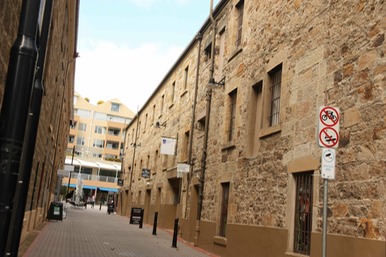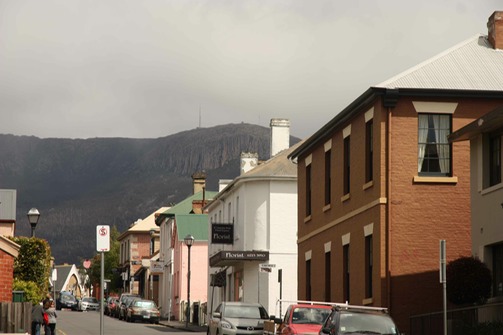
Madam was in her element and in between visits to bookshops I added Salamanca Square, the space behind Salamanca Place, to the list of places that warrant further investigation.
I wasn’t sure we’d get there this time around, but we will get there.
From Salamanca Place, we took a leisurely uphill ramble around Battery Point, one of Hobart’s oldest and most historic areas. It’s an area best experienced on foot, and there’s a detailed itinerary for a two hour walk here, though we chose not to follow it, working more or less in the opposite direction.
Battery Point takes its name from the battery of guns established by Lieutenant-Governor Collins. It was the site of the first residence outside the convict encampment (Cottage Green), built by the Reverend Robert Knopwood, the colony's first Chaplain, after Lieutenant-Governor Collins granted him a 30 acre land grant that covered much of the area behind the western end of Salamanca Place. Knopwood began work on the house on 2 January 1805, moved into a tent beside the work in progress on 22 February 1805, and moved in on 14 March.
Knopwood’s land, along with another 90 acres granted to the new Lieutenant-Governor, Sorell, covered most of Battery Point. Sorell did nothing to improve his grant and the land passed to William Kermode in 1824. A proposal to divide Knopwood's land resulted in the Salamanca development as it is today with a foreshore road and wharf apron gradually extended across from Salamanca Place. The reclamation project took thirty years to complete, the product of convict chain gangs drawn from two hulks moored in the Derwent.
 The subdivision of Sorell’s holding land saw a number of villas built along the crest of the escarpment along what became Hampden Road, which was, basically, where we were headed.
The subdivision of Sorell’s holding land saw a number of villas built along the crest of the escarpment along what became Hampden Road, which was, basically, where we were headed.
As the maritime and shipbuilding facilities went in at New Wharf, the area became the centre for ship building and mercantile activities. Battery Point subsequently became home to a mixture of shipping magnates, merchants, shipwrights, seamen, wharf labourers and their families with Hampden Road as the shopping centre for the developing community.